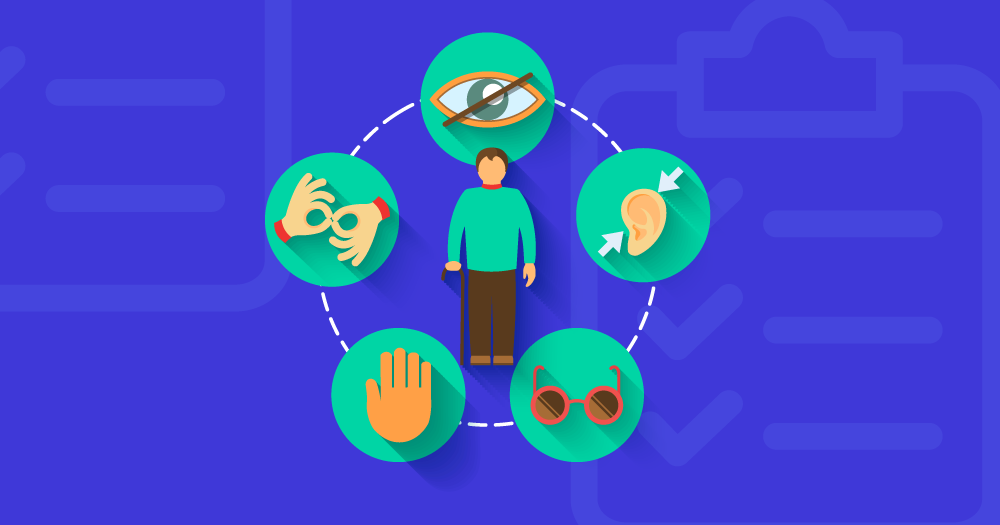Screen Reader Testing
People are born differently, right? We cannot be stubborn about the sameness in the human community. People may face issues like color blindness, loss of sight, hearing loss, etc. Last day, I saw an advertisement made by McDonalds. They have now complained to the ADA. How fast-moving the world isn’t it?
The first thing that comes to mind when considering web accessibility is frequently the use of screen readers by individuals who are blind or visually impaired to accomplish online chores. In reality, how do screen readers operate? Do they all have the same characteristics? Furthermore, why should your website be tested for screen readers? Continue reading to find out how to effectively test your website’s content for screen readers and give all of your visitors a more accessible online experience.
Screen readers??? What is that???
When accessing online material on a computer or mobile device, people with low vision can utilise screen readers, which are specialised text-to-speech programmes. The most widely used operating systems, including Windows, iOS, and Android, are compatible with their design. Emails, webpages, and other documents are among the contents they are able to interpret. This is usually accomplished by the screen reader using the sound card on the user’s device to “announce” the contents of the website (headings, text, links, photos, and so forth) in an artificial voice that is also referred to as a speech synthesiser. For those who are deaf-blind, many screen reader technologies also enable users to view online material using a refreshable braille display. Web material may be accessed at home, at work, or in educational settings with the assistance of screen readers.
Since many individuals with sight loss are unable to use a mouse to access web material correctly, they usually utilise keyboard instructions or trackpad or touchscreen motions to operate their screen reader. They can now utilise a computer to carry out the same chores as a sighted person thanks to this. Because not all screen readers are created equal, the capabilities that are accessible and the way this procedure operates vary depending on the particular screen reader being utilised. Similar to most technology, there are several rival brands and designs with various functionalities. They can be obtained for free or at a cost. Some, like the applications that operate on the Android or iOS platforms, are pre-installed on the user’s device.
Who uses this?
People who are visually impaired are the ones who utilise screen readers the most. This can be a person who is partly sighted, meaning they can’t consistently distinguish all kinds of material on a screen, or someone who is blind and cannot see what is on a screen. Using a screen reader allows certain individuals with cognitive and learning difficulties to view and hear material on a web page at the same time. All screen readers allow their users to freely utilise a computer or mobile device to complete routine online chores without requiring a screen output, which is what unites them. This covers using the internet to browse the web, send emails, shop online, and access multimedia material.
Since the majority of people who will benefit from your accessible website are probably screen reader users, it is a good idea to include screen reader testing in your web accessibility auditing and monitoring to get a firsthand understanding of the difficulties they encounter when using their screen reader. So considering them is also a high necessity.
The next important thing to understand is the importance of this testing
Errors in accessibility, such as leaving off headlines or failing to provide alternate text for an image, might be the difference between a screen reader user successfully accessing your material and them discarding your website as inappropriate and unusable. Even though automated testing can find a lot of accessibility issues on your website, you still need to use a screen reader for manual accessibility testing in order to conduct a thorough audit and make sure everything is functioning as it should following accessibility correction. You should not omit this step.
You may get firsthand experience with the most frequent challenges faced by screen reader users on websites by participating in screen reader testing. When it comes to using your website, you are essentially placing yourself in their position. By using these data, you can create content that better caters to the demands of this audience, expands your potential market share, and enhances your brand’s perception as an inclusive company.
How do we do this?
It’s crucial to understand that using a screen reader for testing purposes does not ensure that your website is completely accessible before getting started. It’s also necessary to combine manual and automated testing, both with and without screen readers. It may seem simple enough to use a screen reader to check if your material is accessible, but it might be detrimental to start screen reader testing without some fundamental understanding of assistive technology. Make sure you are familiar with the fundamentals of screen readers before starting, or assign someone to handle these tasks. It will also be helpful to become familiar with some of the most often used keyboard shortcut instructions. The following are frequent locations for screen reader accessibility problems to appear while doing screen reader testing:
- HTML mark-up
- Alternative text
- Keyboard compatibility
- Visually-led content
- Dynamic content
- Accessibility overlays
UI Improvement along with Screen Readers
The fundamental concept is to make it easier for the user to work and provide the necessary alternatives without any difficulties. The following are some brief suggestions to improve the screen reader user experience.
Make sure your website’s dynamic material is accessible to users. Screen readers can experience difficulties translating material that has been altered on websites.
Use alt tags to provide users with a more thorough description of photos.
Make sure the headers are arranged in a hierarchy-based manner.
In order to provide consumers total control over their navigation, it is preferable to disable autoplay and carousels.
Conduct regular auditory audits of the website to ensure that users are able to utilise screen readers to browse it entirely.
To the end
For people with special needs to be able to access textual material, screen readers are necessary. They must unavoidably be included in QA operations for any website, whether it is in construction or undergoing several updates, in a world that strives to be as inclusive as possible. Recall that the best way to guarantee online accessibility is to use a combination of techniques, such as creating content that is straightforward and easy to understand, testing your pages often using screen readers and automated tests, and adhering to the WCAG guidelines across your website. Your website will be a more welcoming environment for all users if you take these actions.










